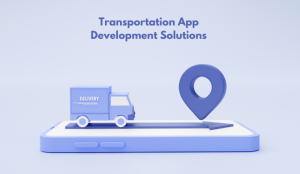Signs That It’s Time for an App Redesign

Designing an app is a complex process that requires the careful consideration of multiple elements. These elements must work together seamlessly to create a user-friendly and visually pleasing experience. They include the app’s layout, color scheme, typography, iconography, imagery, and user interface components like buttons and forms. Each of these elements plays a crucial role in making the app easy to navigate and engaging for the user.
Yet, creating an effective app design is not solely about aesthetics. It also involves crafting an intuitive user experience that caters to the needs of the target audience. The design should reflect the app’s purpose and functionality and should be optimized for different devices and platforms. In this article, we will explore the optimal timing for initiating the app redesign process.
5 Reasons Why Your App Needs a Redesign
In today’s rapidly changing technological landscape, mobile apps have become an essential part of our daily lives. To stay ahead of the competition, app developers must continuously update their applications to reflect the latest design trends and user preferences. Here are five reasons why your app may benefit from a redesign:
Outdated Design
If your app has an outdated design, it can negatively impact users’ experience, leading to a decrease in user engagement.
Poor User Experience
If users struggle to navigate your app or accomplish tasks, it’s time to consider a redesign. Simplifying the app’s interface and making it more intuitive can significantly enhance the user experience.
Platform Compatibility
As new platforms and devices emerge, it’s crucial to ensure that your app is compatible with them. By redesigning your app, you can make it compatible with the latest platforms and devices, expanding your user base and opening up new growth opportunities.
Branding
If your app’s branding isn’t aligned with your company’s messaging or branding, redesigning your app can help to create a cohesive brand identity. Branding is the process of creating a unique identity for a product or service, typically through a combination of design elements, messaging, and positioning. In the context of an app, branding involves creating a consistent and recognizable look and feel for the app that reflects the overall brand identity of the company.
Increased Competition
With countless apps available in the market, competition is fierce. A redesign can make your app stand out from the competition by incorporating new features, improving usability, and enhancing the overall user experience.
Redesigning your app can provide significant benefits such as enhancing the user experience, increasing user engagement, and improving brand identity. Staying up-to-date with the latest design trends and user preferences is essential for ensuring that your app remains competitive in today’s ever-evolving technological landscape.
The Risks of App Redesign
Although app redesign might seem an easy and fast process it is actually can be a daunting task, and it’s essential to be aware of potential risks and pitfalls that could negatively impact the process. Here are some of the risks to avoid during app redesign:
Ignoring User Feedback
Failing to incorporate user feedback in the redesign process can result in a design that doesn’t meet user needs or preferences, leading to low engagement or negative reviews.
Overcomplicating the Design
While a redesign is an opportunity to enhance the app’s features and functionality, overcomplicating the design can lead to confusion, difficulty in navigation, and a poor user experience.
Not Maintaining Brand Consistency
A redesign that doesn’t maintain brand consistency can lead to a loss of brand recognition, and users may find it challenging to associate the new design with your brand.
Neglecting App Performance
A redesign that focuses solely on aesthetics without considering app performance can result in an app that looks good but performs poorly, leading to frustrated users and negative reviews.
Not Considering the Technical Limitations
Redesigning an app requires a deep understanding of the app’s technical limitations. Ignoring these limitations can lead to a redesign that is difficult to implement or causes technical issues for users.
Rushing the Redesign Process
Rushing the redesign process can result in a design that isn’t thoroughly tested, leading to bugs and issues that can harm user engagement and lead to negative reviews.
By avoiding common risks such as ignoring user feedback, losing core functionality, making too many changes at once, focusing too much on aesthetics, not considering the technical limitations, and not testing the redesign, app designers and developers can create a redesign that improves the user experience and meets users’ needs. Taking a user-centered approach and prioritizing user feedback throughout the redesign process is critical to creating an app that users love and continue to use.
The Process of App Redesign: Steps for a Success
To begin with, it’s important to understand the process of app redesign before delving into the steps involved. Let’s take a closer look at the key points of this process:
Analyzing User Feedback
Collecting user feedback is the first step to identifying the problems that need to be addressed in the redesign.
Defining Goals
Clearly defining the goals, outcomes, and metrics to measure success is crucial to guide the redesign process.
Creating a Redesign Plan
A detailed plan outlining the scope, budget, timeline, and team responsibilities is necessary to ensure a smooth and efficient redesign process.
Redesigning User Interface
The user interface should be redesigned with a focus on improving usability, navigation, and visual appeal, based on user feedback and research.
Testing and Refinement
The redesigned app should be tested thoroughly to identify any issues and make necessary refinements before launching the updated version.
Following these steps can help ensure a successful app redesign that meets user needs, improves the user experience, and achieves business goals. Don’t be afraid to overhaul your project — it may be your opportunity for growth. However, it’s important to approach app redesign carefully, taking into account all the risks mentioned in the article and following our step-by-step advice. Remember that before starting the redesign process, you need a strategy and a plan: you must understand why you’re doing it. Aesthetics are not the most important factor — the user experience of your customers is what matters the most.






